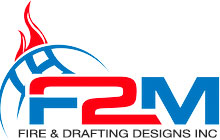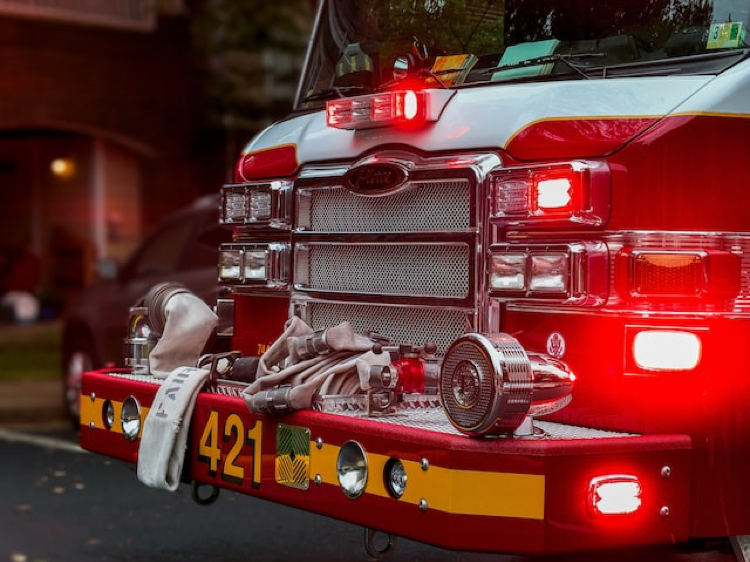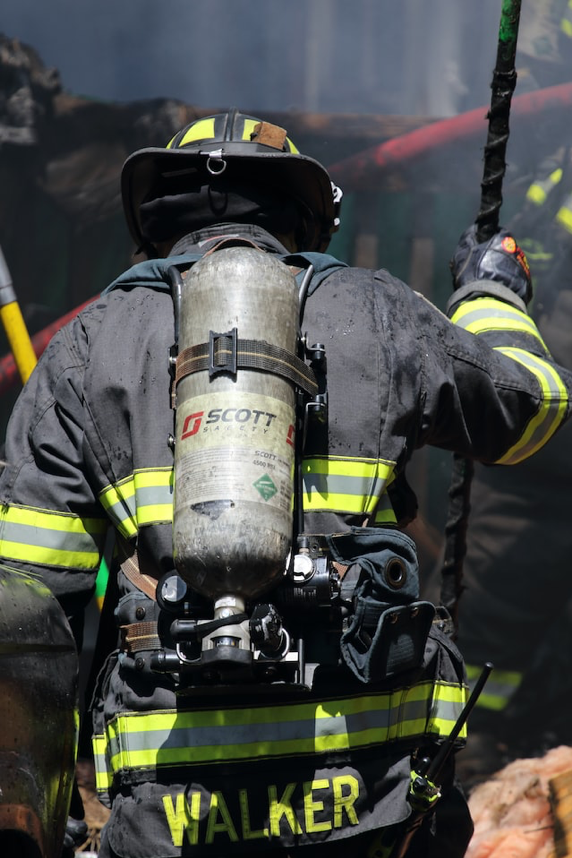Standpipe Layout Design
How to Choose the Right Standpipe Layout for Your Building
In this blog post, we will discuss how to choose the right standpipe layout for your building. A standpipe system is an essential component of any fire protection system for high-rise buildings. It is a network of pipes that supply water to fire hoses, allowing firefighters to fight fires on upper floors of a building. When it comes to designing a standpipe system, it’s important to choose the right layout to ensure that it meets all necessary codes and regulations, and provides adequate protection for your building.
Consider the Building’s Height and Floor Plan
The first step in choosing the right standpipe layout for your building is to consider its height and floor plan. The layout of the standpipe system should be designed to provide adequate water flow to all floors of the building, and to ensure that firefighters can access water quickly and easily in the event of a fire.
Consult with a Professional Standpipe Design Company
Designing a standpipe system is a complex process that requires specialized knowledge and expertise. Working with a professional standpipe design company can help ensure that your standpipe system is designed to meet all necessary codes and regulations, and that it is tailored to the specific needs of your building.
Choose the Right Standpipe Material
Standpipe systems can be made from a variety of materials, including steel, copper, and plastic. The choice of material will depend on a variety of factors, including the building’s height, the location of the standpipe system, and the local building codes and regulations.
Consider the Water Supply
The water supply for your standpipe system is another important factor to consider when choosing the right standpipe layout. You will need to ensure that your standpipe system has access to an adequate and reliable water supply, and that it is designed to provide adequate water flow to all floors of the building.
Choose the Right Standpipe Valves and Connections
The valves and connections used in your standpipe system are also important considerations when choosing the right standpipe layout. The valves and connections should be designed to provide easy access to water, and to allow firefighters to control the flow of water to specific areas of the building.
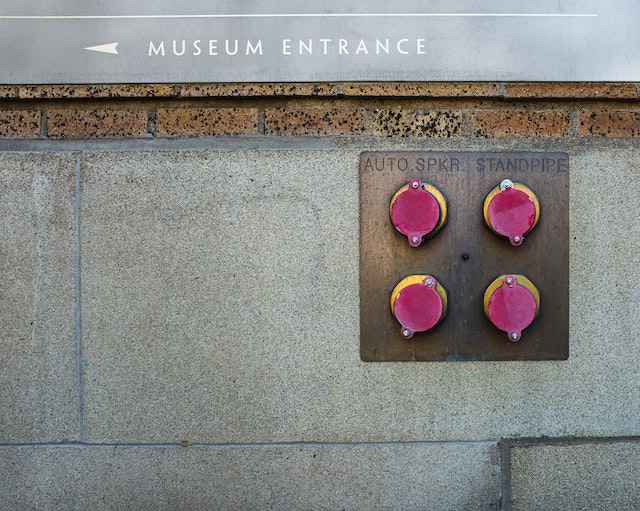
Ensure Proper Maintenance and Inspection
Once your standpipe system is installed, it’s important to ensure proper maintenance and inspection to ensure that it remains in good working order. Regular inspections and maintenance can help identify and address potential issues before they become serious problems.
Standpipe Layout for Your Building? Contact F2M Fire & Drafting Designs Inc.
If you are in need of standpipe layout design services, contact F2M Fire & Drafting Designs Inc. Our team of experienced designers can work with you to create a comprehensive standpipe layout design that provides optimal protection for your building and its occupants.
F2M Fire & Drafting Designs Inc.
31 South Street, Suite 3S-4
Mount Vernon, NY 10550
✆ (718) 928-3009
Email: info@f2mfadds.com
Fire System: Standpipe System Design
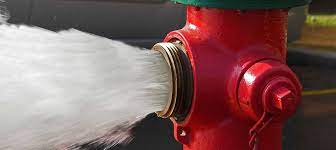 When constructing a building, contractors often manage the building and design of standpipe systems as part of the fire sprinkler system. However, it’s usually best to contract with a professional standpipe system design company for the fire suppression system of your property. Surprisingly, most building owners need to become more familiar with the nuances related to standpipe system design. Because of this, they often compromise on cost and efficiency.
When constructing a building, contractors often manage the building and design of standpipe systems as part of the fire sprinkler system. However, it’s usually best to contract with a professional standpipe system design company for the fire suppression system of your property. Surprisingly, most building owners need to become more familiar with the nuances related to standpipe system design. Because of this, they often compromise on cost and efficiency.
Therefore, it would be best to learn about standpipe system design when creating and incorporating your fire sprinkler system design. Mentioned below is a list of important questions you should consider asking yourself when comprehending the design:
- Which standpipe would be suitable for your property?
- How does the installation process work?
- When does installing a standpipe system become a must?
- What is the ideal place to install hose outlets?
- How much pressure do hose outlets offer?
- What’s the best flow rate?
What are Standpipes?
According to the National Fire Protection Association, standpipes consist of a piping network, hose connections, valves, and several other items for protecting your property from fire. It is important to install each outlet in a fashion that allows the water to flow through nozzles and hoses in spray or stream patterns.
Standpipes have a complex structure that helps extinguish fires on any property. Besides a property’s interior, standpipe systems also safeguard building structures. A standard standpipe system has a vertical hose that creates high water pressure with the help of a pump. In most cases, standpipe systems are attached to sprinkler systems. Firefighters can utilize these systems to manage fires strategically.
Therefore, it’s vital to install each outlet properly. Better yet, consider getting an expert for the installation to avoid any hassle in the future.
Different Standpipe System Classes
Standpipes are available in different classes, and each class is helpful during different conditions. So, it is vital to choose the right standpipe variant. Mentioned below is a close look at the three most common classes of standpipes:
Class One
The class 1 standpipe has a connection of two and a half inches, and only experts use it. Installing this standpipe variant without sufficient knowledge and experience can be quite dangerous. Since the water pressure in class one standpipes is quite high, it would be best to consult a pro to take care of tasks like these. It is also worth keeping in mind that class one standpipes do not come in a hose, which is why firefighters need to bring one along.
Class Two
Class two standpipes have hoses that measure around 1.5 inches. Usually placed in hallways, class two standpipes are ideal for emergencies, which is why you should consider placing them in hallways and similar locations.
Operators must know how to use this type of standpipe because using the hose is risky for unskilled individuals. The class two standpipes have almost become obsolete because of how unsafe they are, and even older buildings are replacing them with new variants.
Class Three
These standpipes are suitable for almost any condition and contain class one and two standpipe features. Since class three standpipes exert water with pressure, experts advise that only experts should operate this system. So, whenever there is an emergency, consider enlisting help from trained individuals or firefighters.
Standpipe System Design: Final Thoughts
The standpipe design you include in your property is vital. Since these systems can be quite complex, getting an expert to choose the best one for your property and install it is vital.
Get in touch with F2M Fire & Drafting Designs Inc. to learn which standpipe class would suit your property. With our professionals by your side, you can breathe a sigh of relief knowing that you will get the best fire suppression solution for your building.
F2M Fire & Drafting Designs Inc.
31 South Street, Suite 3S-4
Mount Vernon, NY 10550
(718) 928-3009
info@f2mfadds.com
https://www.f2mfadds.com/contact
Standpipe System Design
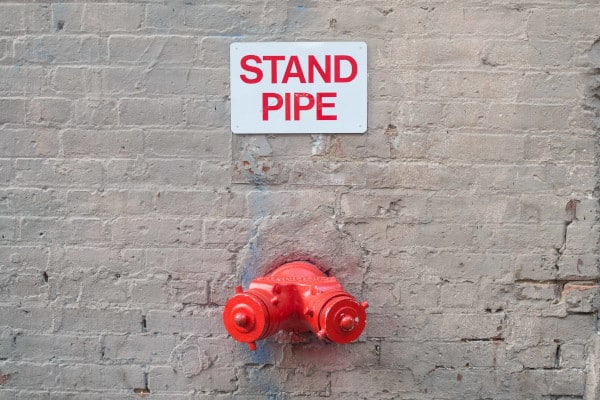 Are you in need of standpipe system design for your commercial, industrial, or residential project? At the time of construction of a building, the contractor manages the design and building of the standpipe system. You should however hire a professional company to design building fire suppression systems. Many building owners are unaware of the nuances in standpipe system design and often end up compromising on its efficiency and cost. Therefore, in advance of beginning your fire sprinkler system design and layout for your building project, you should learn what a perfect standpipe system design contains. Here are some questions that you need to ask yourself while understanding the system design:
Are you in need of standpipe system design for your commercial, industrial, or residential project? At the time of construction of a building, the contractor manages the design and building of the standpipe system. You should however hire a professional company to design building fire suppression systems. Many building owners are unaware of the nuances in standpipe system design and often end up compromising on its efficiency and cost. Therefore, in advance of beginning your fire sprinkler system design and layout for your building project, you should learn what a perfect standpipe system design contains. Here are some questions that you need to ask yourself while understanding the system design:
- Which type of standpipes is perfect for your home?
- What is the installation process?
- What standpipe system should you install?
- When do you need a standpipe system?
- Where should you install the hose outlets?
- What pressure does a hose outlet have?
- What is the appropriate flow rate?
What is a Standpipe?
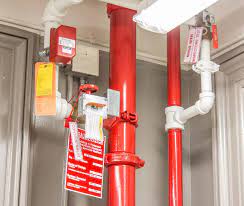 National Fire Protection Association suggests that standpipes include a network of piping, valves, hose connections, and other components that safeguard your home from a fire. You should place these outlets in such a way that the water flows through the hoses and nozzles in streams or spray patterns. The complex structure of the standpipes will help put out a fire throughout the building. Other than inside of the house, the standpipe system should also protect the building structure. A standpipe system includes a vertical hose that generates high water pressure from the pump. Most standpipe systems connect with a sprinkler system. Using this system, firefighters can strategically manage the fire. Therefore, it is important to place the outlets strategically throughout the building. At F2M Fire and Drafting Designs Inc., we help homeowners place standpipes in a way that makes it easier for firefighters to access the system and put out the fire in time.
National Fire Protection Association suggests that standpipes include a network of piping, valves, hose connections, and other components that safeguard your home from a fire. You should place these outlets in such a way that the water flows through the hoses and nozzles in streams or spray patterns. The complex structure of the standpipes will help put out a fire throughout the building. Other than inside of the house, the standpipe system should also protect the building structure. A standpipe system includes a vertical hose that generates high water pressure from the pump. Most standpipe systems connect with a sprinkler system. Using this system, firefighters can strategically manage the fire. Therefore, it is important to place the outlets strategically throughout the building. At F2M Fire and Drafting Designs Inc., we help homeowners place standpipes in a way that makes it easier for firefighters to access the system and put out the fire in time.
What is Standpipe Design?
A standpipe design contains a network of pipes connected with a water supply and hose. These pipes help extinguish fires in a building. Firefighters can access these outlets and use them to control the fire. Every building in NYC should contain a standpipe system. The systems’ design should align with the building’s architecture. You don’t have to worry about this design if your building doesn’t meet the International Building Code. Technicians in our facility have been installing, designing, and maintaining systems for a long time. Besides the building design, our experienced team members can configure the standpipe design to save time and effort. If the building structure doesn’t meet the local building authority’s requirements, regulatory authorities will give you a hard time. Our engineers can help you navigate the building approval process successfully.
Combine Standpipe System with Sprinklers
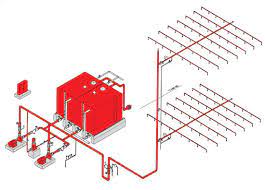 Many building authorities connect the standpipe system with the sprinkler system. Because of the system’s high pressure and versatility, you can connect it with a water sprinkler system to efficiently extinguish flames. Sprinkler systems are remarkable when it comes to controlling fires in residential and commercial buildings. For installation, designs, and maintenance of the sprinkler system, you can contact our team. Standpipe systems and sprinkler systems optimize firefighting strategies.
Many building authorities connect the standpipe system with the sprinkler system. Because of the system’s high pressure and versatility, you can connect it with a water sprinkler system to efficiently extinguish flames. Sprinkler systems are remarkable when it comes to controlling fires in residential and commercial buildings. For installation, designs, and maintenance of the sprinkler system, you can contact our team. Standpipe systems and sprinkler systems optimize firefighting strategies.
Classes of Standpipe Systems
There are two categories of standpipes according to the person who manages the water outlet during a fire. Different standpipes are helpful in different conditions. Therefore, it is essential to choose wisely. Below, we’ll explain all three types of standpipe systems:
1. Class 1
This standpipe class contains a two-and-a-half-inch connection. Only professionals use this type of standpipes. Installation without proper knowledge can be dangerous. Because the water pressure is high, you should consult a professional to handle this task. This class doesn’t contain a hose. In case of an emergency, firefighters must bring a hose and connect it with the outlets.
2. Class 2
This class of standpipes includes 1.5 inches of hose and is placed in the hallways. Anyone can use this standpipe in case of an emergency. That’s why you should place these standpipes in the hallways. Even so, the operator should have some knowledge about using this standpipe. Using this hose can be dangerous for an unskilled person, so to avoid any mishaps, these options have become obsolete. Even in older buildings, professionals install new systems.
3. Class 3
You can use class 3 standpipes in any condition. It contains the features of both standpipes. Because of the heavy water streams, experts recommend against a layperson operating this system. Therefore, at the time of emergency, it is important to contact fire stations and trained building occupants.
Standpipe System Design: Conclusion
Want to learn more about standpipe system design? Give us a call and speak with our seasoned experts about your standpipe system design project for your building. Our experienced engineers and contractors will custom design the best priced and most efficient system for your commercial project.
F2M Fire & Drafting Designs Inc.
1231 Lafayette Ave, Fl 2
Bronx, New York, 10474
✆ (718) 928-3009
info@f2mfadds.com
Standpipe Layout And Calculations For Fire Sprinkler Systems
What are standpipe layout and calculations and work in fire sprinkler systems design? Standpipes are another safety measure to protect buildings and spaces from fire damage. The arrangement of hoses, valves, pipes, and water supply connections comprise the way standpipes work. In simple terms, it is a method to extinguish fires using a hose and pipe connection through different water outlets in a single building or space.
Standpipes should always be in compliance with the rules and codes of NFPA25. The rules and regulations allow proper and adequate layout modeling and use of standpipe systems. Mentioned below are a few types of standpipes:
Types of Standpipe
- Class I: Provides a twenty-one-and-half inches hose connection. It is suitable for fire department personnel or trained people.
- Class II: A standpipe station that has a hundred-inch hose pipe with it. It has an eleven and half-inch connection. In case of emergency, fire department personnel with adequate training use this. Normally, these stay in cabinets.
- Class III: With reducers of varying sizes is the type of standpipe with 11/2 and 21/2-inch hose connections. These provide both large and small volumes of water supply for a fire emergency.
Standpipe Layout
According to the NFPA14 code, a few conditions are necessary to design and install standpipe layouts in a building. Standpipes are important in tall and occupant buildings such as assembly areas, airport terminals, and piers. Buildings with an automatic sprinkler system at the top need a standpipe station on the stories above three grades. Buildings without an automatic sprinkler system should have a standpipe station on stories above two grades. In high-rise buildings, lengths vary between 6 and 15 meters above grade.

(Source)
Maintaining Standpipes
Inspections, maintenance, and testing are part of standpipe operations against fire emergencies. Quarterly inspections for pipes, valves, and water supply allow for a fully operational standpipe. Standpipe stations usually fall within the use of fire department personnel. They opt for them in case of fire emergencies. However, trained personnel who are occupants or workers can also rely on them in case of fires.
Regular checkups leave no room for error when trying to extinguish fires. Therefore, before designing and installing, the layout has to be very transparent in terms of accessibility. This makes it easier to prevent fire hazards.
Fire Sprinkler Systems
A flow test of the water supply is necessary before performing hydraulics calculations for the fire sprinkler system. This information can be public, and you can get it from the municipal water department. However, if there is a lack of sufficient water supply from a municipal fire hydrant, alternatives are available.
These alternatives may include ponds, lakes, gravity tanks, water tanks, and many others. Nonetheless, to generate a water flow from static sources, there must be more than usual pressure. This ensures a complete and pressurized water flow for the sprinkler heads through pipes.

(Source)
Hydraulics Calculations
There are a few important calculations for fire sprinkler systems:
- Water Flow Test: This information is usually available if you are using an open source such as municipal fire hydrants. However, if there is a closed water supply source, such as water tanks, gravity tanks, or underground water tanks, there is extra pressure, which allows a consistent flow of water through the sprinkler heads. This suggests the vitality of water flow in hydraulics calculations.
- Friction Loss: Refers to the loss of pressure that occurs due to the contact of water with the duct or pipe’s surface. This is significant because it affects the speed of the water. In emergencies, this is as vital as an entire sprinkler system.
- Sprinkler density: Refers to the sprinkler heads spread over an area. It implies that the occupancy hazard calculation is accurate, as underestimating the fire potential in a space may lead to having fewer sprinkler heads to extinguish the fire.
- Sprinkler Flow: this is a specification of the sprinkler head itself.
- Sprinkler Pressure: This entails the spray pattern and pressure of the sprinkler head. It is an important calculation because it uses the flow of the sprinkler head and its area coverage.
Standpipe Layout & Calculations for Fire Sprinkler System: Conclusion
At F2M Fire & Drafting Designs Inc., you can find professional designers for standpipes and fire sprinkler systems. You can utilize their skills to create a fire safety system for your space and thus, curtail the risks of suffering from fire relating injuries or loss of possessions.
Visit our website for more info, or email us at info@f2mfadds.com for further inquiries.
F2M Fire & Drafting Designs Inc.
1231 Lafayette Ave, Fl 2
Bronx, New York, 10474
(718) 928-3009
info@f2mfadds.com
References:
- https://firetech.com/manual-standpipes-and-acceptance-testing-methods/
- https://www.nfpa.org/news-and-research/publications-and-media/blogs-landing-page/nfpa-today/blog-posts/2019/05/10/nfpa-1-where-are-standpipes-required-firecodefridays
- https://www.qrfs.com/blog/91-standpipe-systems-part-2-standpipe-system-components-and-how-to-maintain-them/
- https://www.fireengineering.com/fire-prevention-protection/standpipes-101-part-1/#gref
